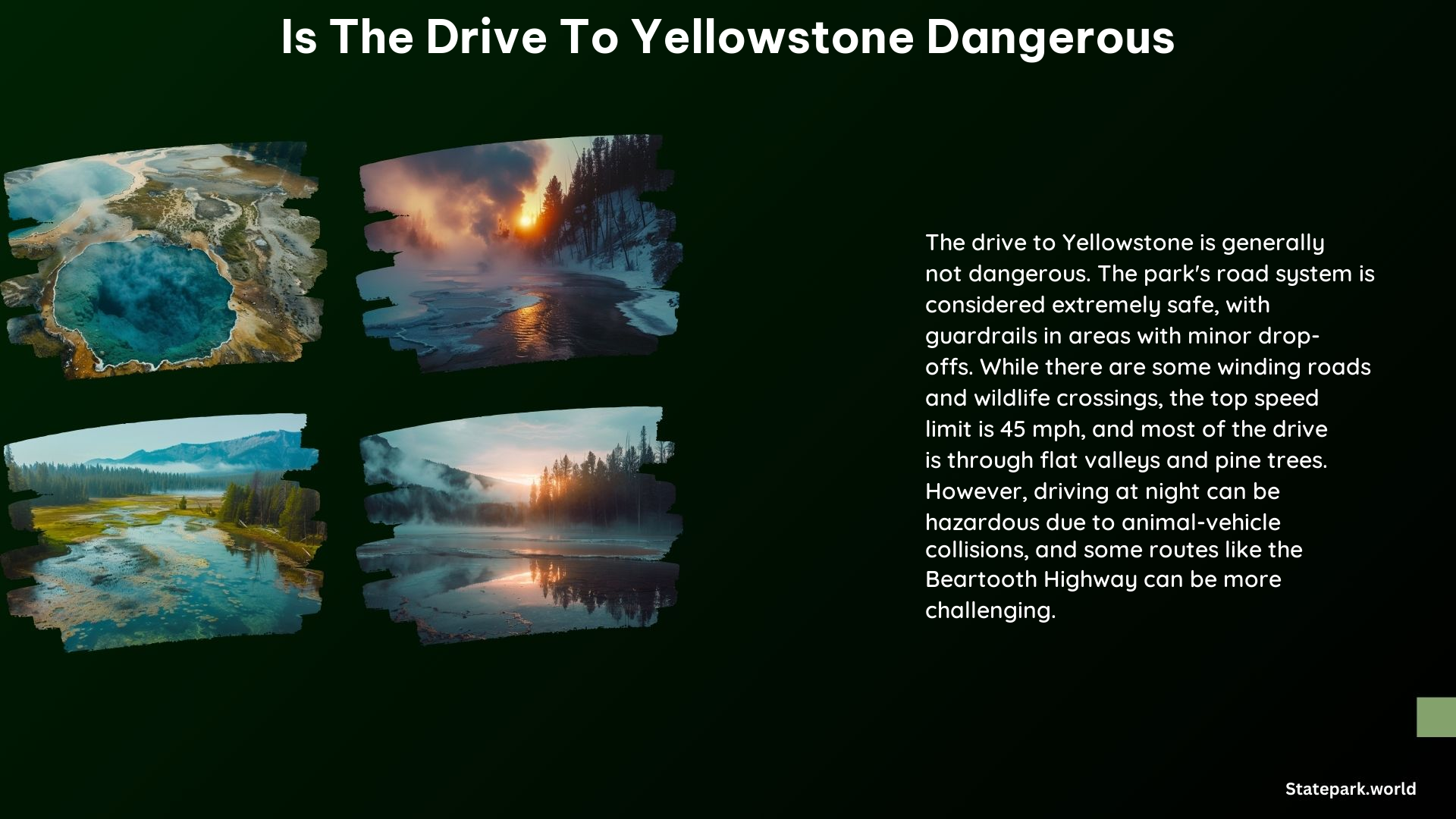The drive to Yellowstone National Park is generally considered safe, but there are some risks and considerations to be aware of, particularly regarding wildlife and speed limits. While the park’s road system is mostly flat and valley-based, with guardrails in many areas, the presence of wildlife and the need to adhere to speed limits can pose challenges for drivers.
Safety of the Drive
Yellowstone’s road system is designed with safety in mind. The park’s roads are mostly flat and valley-based, with no sheer cliffs to drive along. Additionally, many areas have guardrails to ensure safety, especially where there are minor drop-offs.
Risks and Considerations

Wildlife
Yellowstone is home to a variety of wildlife, including bears, bison, and wolves. These animals can cause traffic jams and pose a risk to drivers, especially at night. Hundreds of animal-vehicle collisions occur every year, resulting in injuries, fatalities, and damage to vehicles.
Speed Limits
The top speed limit in Yellowstone is 45 mph, with many areas having slower speed limits. It is essential to follow these limits to avoid accidents and ensure safety.
Traffic Jams
“Bear jams” and “Buffalo jams” are common, especially during summer months, and can add significant time to your trip.
Planning and Precautions
Plan Your Day
Knowing which attractions to stop at and how to plan your day can be the most challenging part of driving in Yellowstone. It is recommended to create a no-fail plan to see the best of the park.
Avoid Driving at Night
It is not recommended to drive at night in Yellowstone due to the high risk of animal-vehicle collisions.
Use Google Street View
You can use Google Street View to preview the roads and attractions in Yellowstone, which can help alleviate any concerns about driving in the park.
Alternative Routes
East Entrance
The road into Yellowstone Park from Cody through the east entrance is considered tame compared to the Beartooth Pass.
I-15 and US20
Taking I-15 north from Salt Lake City and then getting off on US20 to West Yellowstone provides a mostly easy and fairly straight drive without much stress.
Additional Tips
Stay 25 Yards Away from Bison and Elk
When observing wildlife, maintain a safe distance of at least 25 yards from bison and elk, and 100 yards from bears and wolves.
Be Aware of Other Drivers
Other drivers can be a significant hazard in Yellowstone, so it is essential to be attentive and cautious while driving.
In conclusion, while the drive to Yellowstone is generally safe, it is crucial to be aware of the risks and take necessary precautions to ensure a safe and enjoyable trip.
References:
– https://wereintherockies.com/drivinginyellowstone/
– https://www.reddit.com/r/yellowstone/comments/1vrqhb/how_scary_is_driving_through_yellowstone/
– https://en.tripadvisor.com.hk/ShowTopic-g60999-i481-k13466866-o30-Is_it_safe_to_drive_at_night_in_Yellowstone_Park-Yellowstone_National_Park_Wyoming.html
– https://www.tripadvisor.com/ShowTopic-g60999-i481-k7581641-Best_road_in_to_Yellowstone_for_someone_afraid_of_heights-Yellowstone_National_Park_Wyoming.html
– https://www.fodors.com/community/united-states/is-drive-from-salt-lake-city-to-yellowstone-dangerous-windy-854631/
